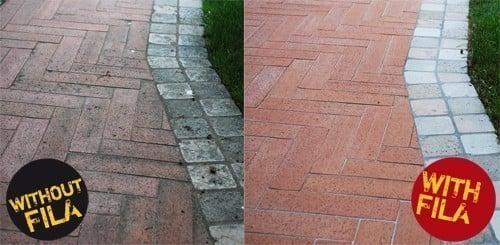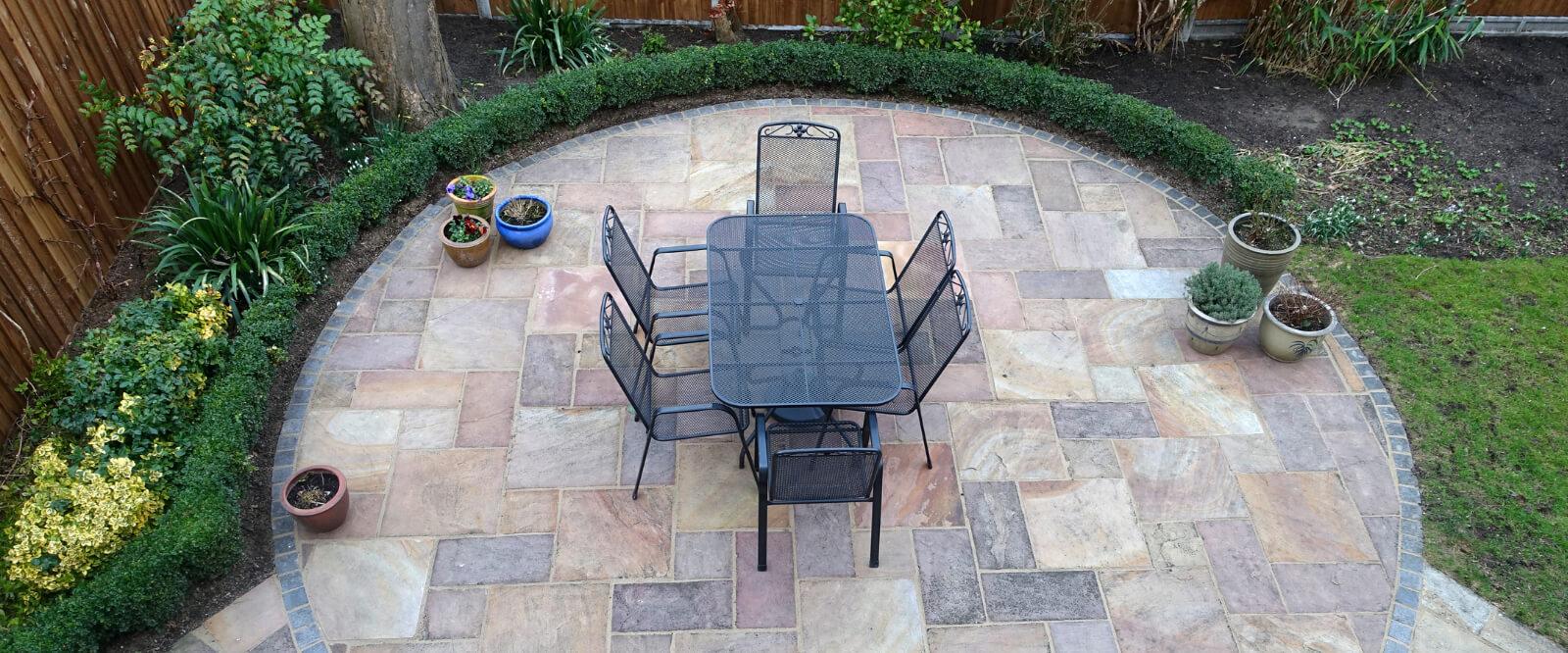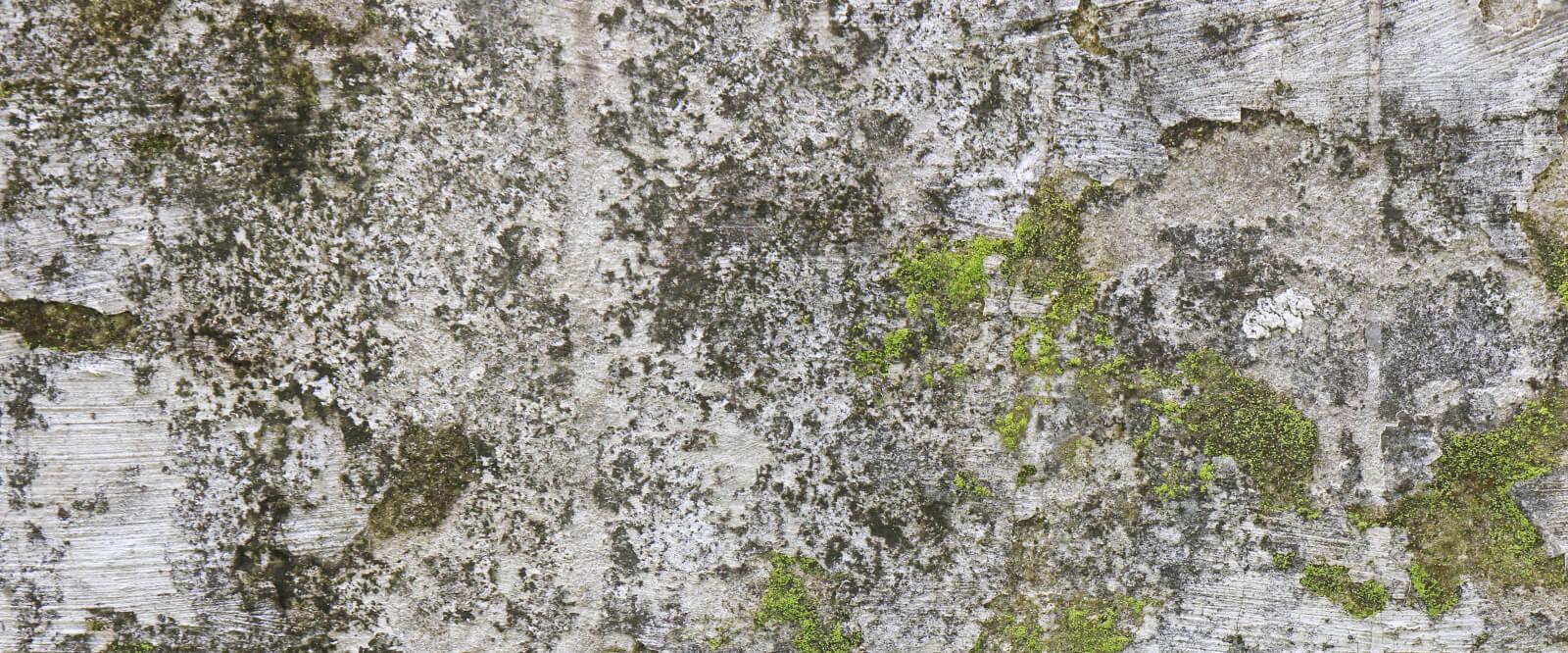Did you know, a black spot remover and quarry tile cleaner are your best bet if your patio is riddled with lichen? The longer black spots are left, the bigger they get, and sometimes no amount of scrubbing helps either. These marks can be a major concern but don’t worry; they’re common, and in this post, we’ll teach you how to stop them for good. From why black spots occur to how to prevent them returning, here’s everything you need to know to keep your stonework clean.
What are patio black spots?
‘Patio black spots’ are actually lichen, a composite organism that commonly thrives on stone surfaces in wet and shadowed conditions. Starting life as tiny dust-likes spores that grow underneath plants, these spores eventually land onto patios thanks to bad weather conditions. As lichen matures, its tendrils bore into the pores of a stone, seeking minerals, and gradually spreading through the surface to form a ‘crustose’ growth. For this reason, stone can start to look dull, but the most obvious clue lichen is present is the sight of small black spots across the surface. These can look like tiny ink splatters, ruining the appearance of stone, but worse of all, lichen will continue to spread in search of nutrients if left untreated. It’s also able to burrow down into a stone at a rate of 2mm per year and can be extremely difficult to remove.
What type of stone does it affect?
All paving and walls are prone to lichen, but some are more susceptible than others. Black spot can and will affect concrete paving, but it’s not the first choice, lichen loves nothing more than a porous sedimentary stone. For example, due to its open surface texture and larger pores, Sandstone is more prone to black spot than any other stone type. As you move through this stone’s colour options, however, from dark to light, black spot is more prevalent in lighter coloured stones. In fact, Fossil Mint is one of the most affected Sandstones, mainly if it’s surrounded by plants and laid in damp, shady conditions. Additionally, limestone is fairly resistant to lichen thanks to its close-grained surface but be warned; this stone is not entirely immune.
Will a power wash do the trick?
While this may seem like an obvious step, pressure washing can damage your stone, making it vulnerable to organic infections. If these microspores are well anchored in, you need a gentler method, and this is where a limestone patio cleaner comes in.
The black spot remover to use instead
A far more effective black spot remover is FILA’s ALGACID, a detergent that removes algae, mould, and lichen from external walls and paving. It’s simple, just spray directly onto the surface and leave to act for 15 minutes before wiping with a clean, damp sponge. Providing almost instant results, black spots and white fungi are banished, giving your stonework that ‘recently laid’ new look. ALGACID can also be sprayed onto a variety of stones which means it works well as a brick and quarry tile cleaner too.

How to stop black spots from ever returning
Naturally, the best way to beat black spots is to not get them at all – easily achievable with a fantastic stone sealer by FILA! Sealing your patio is also very easy to do once nasty lichen is gone, and it will prevent any more tendrils from trying to get back into the pores of your stone. FILA’s HYDROREP ECO is a water-based wall sealer that can be used for stone pavers, bricks walls and tuff. This breathable treatment will not only seal and protect your patio against the dreaded black spots, but it will also prevent weather damage and efflorescence too.
With HYDROREP ECO, this product is ready to use, but we would recommend carrying out a patch test to check for any changes in colour. If you are happy with the result, this wall sealer can be applied – check out our technical data sheet for application details.
Struggling with the removal of black spot?
If your current limestone patio cleaner just isn’t up to the job, speak to FILA for further advice on patio black spots. Contact our technical team, we’re always happy to help our readers learn new ways to keep their patio looking brand new! Thank you for reading.

